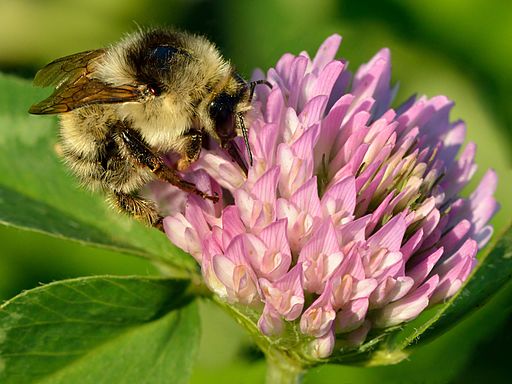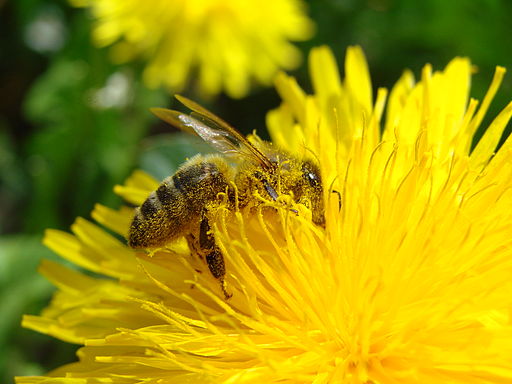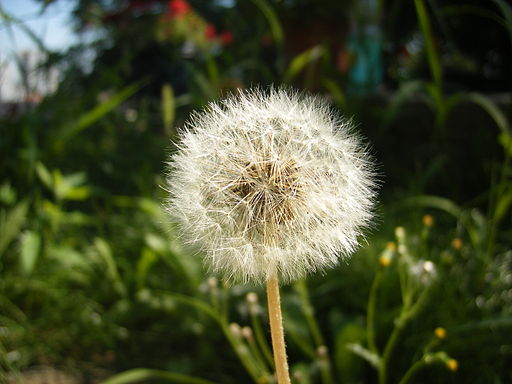Where Have All the Bees Gone?
Imagine going to the grocery store as usual and discovering after ingesting some of the food you brought home that it made you ill, weakened the immune system of some of your family, and killed others. You had no way of knowing what was about to happen, and if you want to eat you have no choice but to return to the same grocery store next week, taking your chances. There is no alternative. This is the situation for bees and other pollinators, whose grocery store consists of the flowers they have visited for thousands or millions of years. Massive die-offs of bees and butterflies have been in the news for many years now, and recently the U.S. Fish and Wildlife Service placed the yellow-faced bees of Hawaii on the Endangered Species List, the first bees to be included.

Sand bumblebee on red clover. Photo by Ivar Leidus.

Pollination of dandelion by a bee. Photo by Guérin Nicolas.
Use of broad spectrum pesticides in agriculture is partly responsible for the decline in bee populations, but an often overlooked contributing factor is the part homeowners play when they distribute similar pesticides on their lawns and gardens. Unlike the use of pesticides in agriculture which is done in the name of food production, homeowner use of pesticides is solely in the interest of aesthetics. Individuals can change this behavior more readily than they can the practices of large agricultural concerns.
Change starts in our own yards, and it starts with a change in perspective about what is acceptable and beautiful. Instead of insisting on a monoculture of grass in the lawn, change the definition of the lawn to include some flowering plants. Look on dandelions and clover as beneficial for the bees, rather than as weedy pests to be exterminated at whatever cost in time, money, energy, and collateral damage. An important aspect of Integrated Pest Management is tolerance of a certain amount of pest damage, however “pest” is defined, and the realization that perfection is neither attainable nor even desirable. Nature is messy. The bees prefer it that way, and will thank you for your part in letting it be. The hard part will be in convincing your neighbors of it while fluff from your dandelions drifts into their yards.
– Izzy 

Dandelion fluff. Photo by Djordjer.
